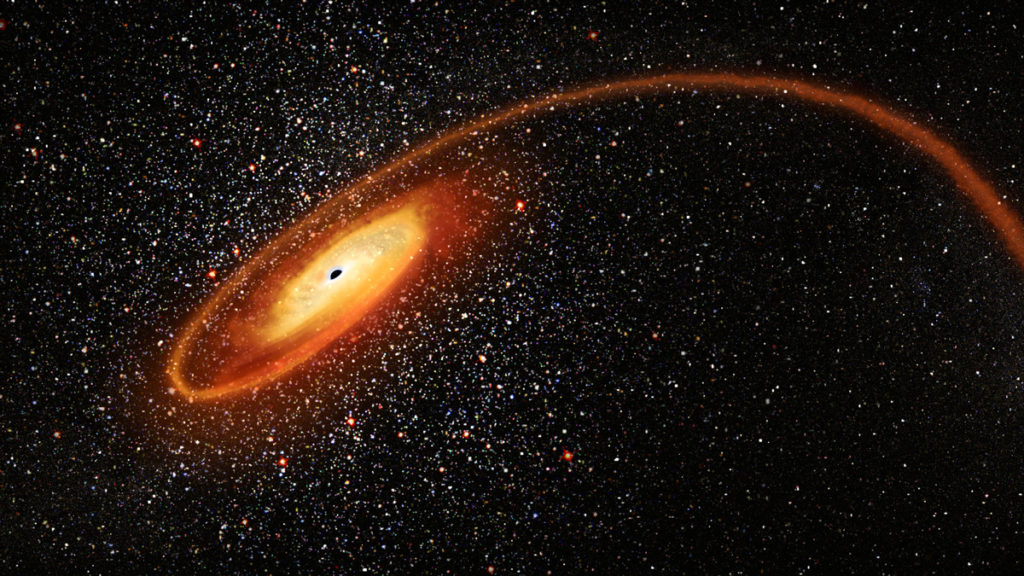A report published on Tuesday in the Astrophysical Journal explained that so-called intermediate-mass black holes (or IMBHs) are a long-sought “missing link” in black hole evolution.
Scientists said they have been particularly difficult to find because they are smaller and less active than supermassive black holes.
University of New Hampshire astronomer Lin Dacheng-who published the report-said that he and his team essentially caught an IMBH in the act of eating up a star that came “too close to its gravitational pull”.
The team followed up work from NASA’s Chandra X-ray Observatory and the European Space Agency’s X-ray Multi-Mirror Mission, after they spotted a powerful X-ray fl are in 2006.
The researchers in 2006 weren’t sure if the source was inside or outside our galaxy. They did, however, attribute it to a star being torn apart after coming too close to a gravitationally powerful compact object, such as a black hole.
Lin said his team used data collected from NASA’s Hubble Space Telescope and European Space Agency X-ray detection satellites to resolve its precise location.
Hubble was pointed at the X-ray source, and found the X-rays emanated from a distant, dense star cluster on the outskirts of another galaxy.
The scientists said in the paper, that at about 50,000 times the mass of our Sun, the black hole is smaller than the supermassive black holes that lie at the cores of large galaxies, but larger than stellar-mass black holes formed by the collapse of a massive star.
Though there have been a few other IMBH candidates, researchers consider these new observations the strongest evidence yet for mid-sized black holes in the universe.
“Intermediate-mass black holes are very elusive objects, and so it is critical to carefully consider and rule out alternative explanations for each candidate,” said Lin. “That is what Hubble has allowed us to do for our candidate.”
Scientists said that confirming one IMBH creates the possibility that many others remain undetected, and raises questions about how a supermassive black hole might grow from an IMBH, how IMBHs themselves form, and if dense star clusters are their favored home.
“Adding further X-ray observations allowed us to understand the total energy output,” said team member Natalie Webb, from the Universite de Toulouse in France.
“This helps us to understand the type of star that was disrupted by the black hole.
“Studying the origin and evolution of the intermediate mass black holes will finally give an answer as to how the supermassive black holes that we find in the centres of massive galaxies came to exist,” Webb added.
